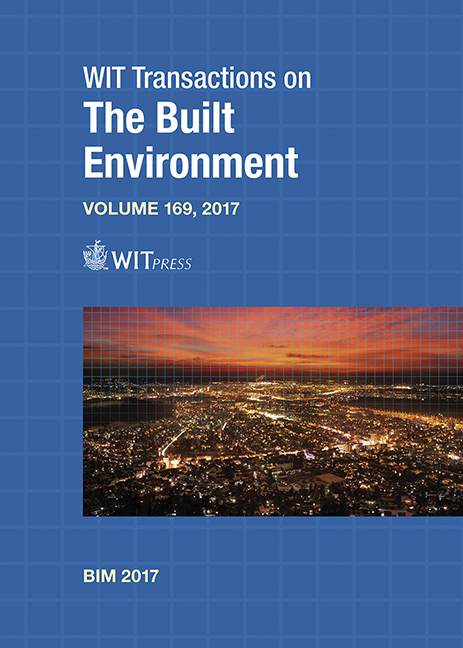BUILDING INFORMATION MODELLING (BIM) AS AN ENABLER FOR WHOLE-BUILDING EMBODIED ENERGY AND CARBON CALCULATION IN EARLY-STAGE BUILDING DESIGN
Price
Free (open access)
Transaction
Volume
169
Pages
12
Page Range
89 - 100
Published
2017
Size
318 kb
Paper DOI
10.2495/BIM170091
Copyright
WIT Press
Author(s)
AMALIA BANTELI, VICKI E. STEVENSON
Abstract
In recent years, there has been a worldwide effort to reduce carbon emissions from buildings. Operational energy (OE) reduction has been the main focus of the Industry as it accounts for a greater proportion of carbon emissions throughout the building life and is easier than embodied energy (EE) to predict. However, as OE is reduced, embodied energy and carbon emissions become more significant. Further to this, early-stage design decisions are crucial as they determine a significant portion of a building’s life-cycle impacts and cannot easily be amended later in the life of a building. Currently though, there is a lack of legislation and guidance relating to embodied carbon (EC) in buildings. This, together with the UK construction industry fragmentation, creates a significant barrier to dealing with embodied carbon at the design stage. The UK Government has mandated the implementation of collaborative 3D BIM for all public-sector projects. This step aims to tackle cost and carbon emission reduction targets by encouraging the construction Industry to operate more collaboratively thereby enabling greater efficiency. Since BIM empowers communications and stores information into one single digital model it has the potential to enable whole-building EC calculations. This can facilitate EC calculation to be included in early-design stage. This paper looks at literature that relates to BIM and EC’s role in early-stage design and draws conclusions on how BIM can enable EC calculation inclusion to early-stage design. It establishes a correlation between the matrix of information required for BIM and the information required for whole-building EC calculations. This research aims to reveal the actors and processes involved in providing this information and suggest the project stages that EC calculations should take place in early-stage design. The future benefit is to inform practice and policy to enable EC reduction through BIM in order to meet overall carbon targets.
Keywords
BIM, embodied energy, embodied carbon, early-stage design





